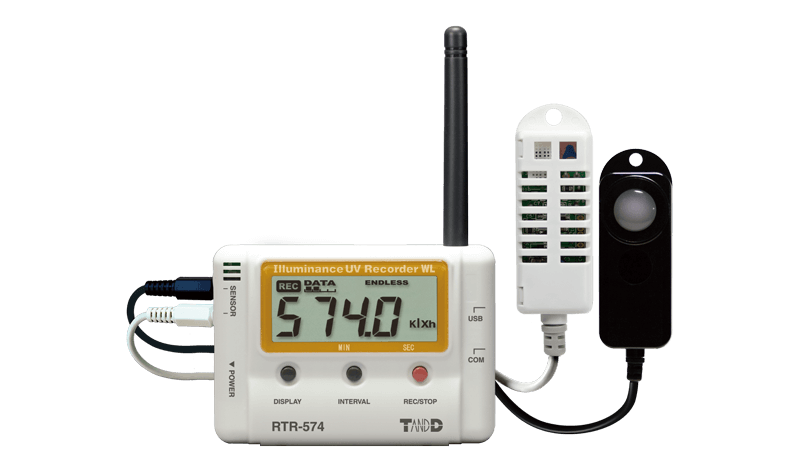Art enables people to better understand both the past and the present, and museums are critical for providing that valuable resource to its patrons. Monitoring the environmental conditions in which the artwork is stored or displayed is key to the success of any art museum. The Saint Louis Art Museum understands this better than anyone—its mission is to collect, present, interpret and conserve the highest quality works of art. To fulfill its mission, the Saint Louis Art Museum preserves its art with the highest degree of accuracy using TandD data loggers. Many materials in the museum, including fabric, canvas and plastic must be constantly monitored at all times, with special consideration for modern art that's more susceptible to damage. These proper preservation practices are critical for minimizing the premature deterioration of precious art.
Products
The RTR-500 Series has been discontinued and replaced by the improved RTR500B Series. The following links will provide information about the successor model.
RTR-500 Series
-

Illuminance, UV Intensity, Temperature, Humidity
-
RTR500B
Series
Understanding Premature Deterioration

The Saint Louis Art Museum knew it could get rough estimates of deterioration by spot reading, but this approach fails to provide accurate readings of preservation parameters. Rather than spot checking and monitoring with light meters, the museum needed a solution that could actively monitor accumulated exposure to key environmental conditions in real-time. These conditions include illuminance, UV, temperature and humidity— all of which can lead to the deterioration of art. By monitoring these conditions with a real-time, four-in-one data logger, the museum not only better preserves its artwork, but it can also provide better information to lending institutions during the time their works are on view or in storage. This hard data could be the difference between securing a piece of art or losing it to another museum. The museum also needed its solution to work in a newly built wing that’s lit primarily by daylight, and it faced the challenge of preserving its art despite high levels of sun exposure. Additionally, it needed a data logger that was compact, had wireless connectivity and custom sensor functionality.
Improving Its Process with TandD
To address its challenges, the Saint Louis Art Museum decided to work with T&D Corporation to develop the proper four-in-one solution to monitor environmental exposure. The museum purchased 50 wireless TandD RTR-574 loggers for illuminance, UV, temperature and humidity— which can store up to 8,000 data sets each. The RTR-574 logger has an illuminance measurement range from 0 to 130 klx and, UV monitoring range of 0 to 30mW/cm2, temperature range from 0 to 55°C and humidity range from 10 to 95 percent RH. It maintains an internal accumulation of light and UV exposures, yielding readings of lux-hours and milliwatts per square centimeter hour. The RTR-574 can also log intervals between one second and 60 minutes, allowing the Saint Louis Art Museum to keep thorough preservation records. The data loggers can wirelessly connect to T&D’s free cloud-based WebStorage Service, where critical data is automatically uploaded, stored and viewed at any time on any device. Data can be collected from multiple loggers at once, and email alerts can be configured in real time. These features give conservation professionals peace of mind by ensuring art is safe at all times.
"Because some of these works are sensitive, small differences can add up quickly if something isn't right. We sleep better at night knowing we have TandD data loggers for our artwork."
– Claire Winfield, art conservator, Saint Louis Art Museum
Implementing TandD for Proper Preservation

By using T&D's RTR-574 logger, the Saint Louis Art Museum was able to effectively account for variable light levels due to the museum's daylight lighting. The loggers enabled the museum to view total light exposure for each piece of art and assess how it relates to the single value standard listed in conservation literature. This was true even for UV monitoring, a factor that’s otherwise cumbersome to measure. To best monitor data, the museum created a wall-mounted box that houses the RTR-574. Because all data can be accessed wirelessly from PCs and mobile devices through T&D's free WebStorage Service, museum employees don't need to remove the logger from its box to collect the data. The completely automated readings provide the museum with an essential record of all conditions, allowing the Saint Louis Art Museum to best preserve its art and present more thorough and accurate data to its lenders more effectively than ever.
